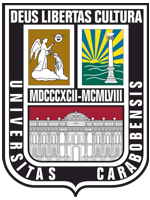Adaptation of the communicative approach to teaching English in higher education
DOI:
https://doi.org/10.46502/issn.1856-7576/2024.18.04.12Keywords:
academic achievement, communicative approach, communicative skills, English language teaching, higher education.Abstract
The article examines the effectiveness of adapting the communicative approach to teaching English in higher education. The aim of the study is to determine the impact of new methodologies on the development of students' communicative competencies. To achieve this goal, the following methods were used: surveys, testing, observation, and semi-structured interviews. Statistical analysis included the Levene's test, the Mann-Whitney test, ANOVA, and correlation analysis. The results showed a significant improvement in students' communicative skills: the average scores in grammar knowledge tests increased from 72.4 to 85.6 and lexical skills improved from 68.7 to 82.5. Other communicative skills also improved: speaking increased from 70.3 to 83.8 (p < 0.01) and listening improved from 65.2 to 80.1 (p < 0.01). The practical significance of the results lies in the potential integration of communicative methods into curricula to enhance the quality of language education. Prospects for further research include evaluating the long-term effectiveness of the communicative approach and its adaptation to different forms of learning, including online and blended formats.
References
Ali, S. S. (2019). Problem based learning: A student-centered approach. English Language Teaching, 12(5), 73–78. https://doi.org/10.5539/elt.v12n5p73
Ayu, M., & Pratiwi, Z. F. (2021). The implementation of online learning in English language teaching during pandemic: The teachers voice. Journal of Research on Language Education, 2(2), 93–99. Retrieved from: https://ejurnal.teknokrat.ac.id/index.php/JoRLE/article/view/1316/619
Castro, L., & Villafuerte, J. (2019). Strengthening English language teaching in rural schools through the role-playing: Teachers’ motivations. International Journal of Educational Methodology, 5(2), 289–303. https://doi.org/10.12973/ijem.5.2.289
Chang, S. Y. (2019). Beyond the English box: Constructing and communicating knowledge through translingual practices in the higher education classroom. English Teaching & Learning, 43(1),23–40. https://doi.org/10.1007/s42321-018-0014-4
Chen, C. M., Chen, L. C., & Yang, S. M. (2019). An English vocabulary learning app with self-regulated learning mechanism to improve learning performance and motivation. Computer Assisted Language Learning, 32(3), 237–260. https://doi.org/10.1080/09588221.2018.1485708
Chen, H. L., & Wu, C. T. (2023). A digital role-playing game for learning: Effects on critical thinking and motivation. Interactive Learning Environments, 31(5), 3018–3030. https://doi.org/10.1080/10494820.2021.1916765
Crisianita, S., & Mandasari, B. (2022). The use of small-group discussion to imrpove students’speaking skill. Journal of English Language Teaching and Learning, 3(1), 61–66.
De Jager, L., Rwodzi, C., & Mpofu, N. (2020). The innovative use of social media for teaching English as a second language. TD: The Journal for Transdisciplinary Research in Southern Africa, 16(1), 1–7. Retrieved from: https://hdl.handle.net/10520/EJC-1d2c55516c
Dos Santos, L. M. (2020). The discussion of communicative language teaching approach in language classrooms. Journal of Education and e-Learning Research, 7(2), 104–109. https://doi.org/10.20448/journal.509.2020.72.104.109
Fandiño, F. G. E., Muñoz, L. D., & Velandia, A. J. S. (2019). Motivation and e-learning English as a foreign language: A qualitative study. Heliyon, 5(9), e02394. https://doi.org/10.1016/j.heliyon.2019.e02394
Frumkina, A., Diachenko, M., Polyezhayev, Y., Savina, N., & Hadi, F. (2020). Readiness of future teachers for integrated teaching of educational subjects in foreign language. Revista Práxis Educacional, 16(38), 502–514. Retrieved from: https://periodicos2.uesb.br/index.php/praxis/article/view/6023
Hamad, M. M., Metwally, A. A., & Alfaruque, S. Y. (2019). The impact of using YouTubes and audio tracks imitation YATI on improving speaking skills of EFL learners. English Language Teaching, 12(6), 191–198. https://doi.org/10.5539/elt.v12n6p191
Konotop, O., Bykonia, O., Bondar, O., Shevchenko, Y., & Kasianchuk, N. (2021). Practice of using GoToMeeting/Zoom in the study of foreign languages. Journal for Educators, Teachers and Trainers, 12(3), 176–185. Retrieved from: https://jett.labosfor.com/index.php/jett/article/view/557
Laadem, M., & Mallahi, H. (2019). Multimodal pedagogies in teaching English for specific purposes in higher education: Perceptions, challenges and strategies. International Journal on Studies in Education, 1(1), 33–38. Retrieved from: https://acortar.link/Kd78G9
Macaro, E., Akincioglu, M., & Han, S. (2020). English medium instruction in higher education: Teacher perspectives on professional development and certification. International journal of applied linguistics, 30(1), 144–157. https://doi.org/10.1111/ijal.12272
Namaziandost, E., Neisi, L., Kheryadi, & Nasri, M. (2019). Enhancing oral proficiency through cooperative learning among intermediate EFL learners: English learning motivation in focus. Cogent Education, 6(1), 1683933. https://doi.org/10.1080/2331186X.2019.1683933
Patak, A. A., Wirawan, H., Abduh, A., Hidayat, R., Iskandar, I., & Dirawan, G. D. (2021). Teaching English as a foreign language in Indonesia: University lecturers’ views on plagiarism. Journal of Academic Ethics, 19, 571–587. https://doi.org/10.1007/s10805-020-09385-y
Rinekso, A. B., & Muslim, A. B. (2020). Synchronous online discussion: teaching English in higher education amidst the covid-19 pandemic. JEES (Journal of English Educators Society), 5(2), 155–162. https://doi.org/10.21070/jees.v5i2.646
Robert, R., & Meenakshi, S. (2022). Rereading oral communication skills in English language acquisition: The unspoken spoken English. Theory and Practice in Language Studies, 12(11), 2429–2435. https://doi.org/10.17507/tpls.1211.25
Saed, H. A., Haider, A. S., Al-Salman, S., & Hussein, R. F. (2021). The use of YouTube in developing the speaking skills of Jordanian EFL university students. Heliyon, 7(7), e07543. https://doi.org/10.1016/j.heliyon.2021.e07543
Salem, A. A. (2019). A sage on a stage, to express and impress: TED talks for improving oral presentation skills, vocabulary retention and its impact on reducing speaking anxiety in ESP settings. English Language Teaching, 12(6), 146–160. https://doi.org/10.5539/elt.v12n6p146
Seraj, P. M. I., & Hadina, H. (2021). A systematic overview of issues for developing EFL learners’ oral English communication skills. Journal of Language and Education, 7(1), 229–240.
Singh, C. K. S., Singh, T. S. M., Ja’afar, H., Tek, O. E., Kaur, H., Moastafa, N. A., & Yunus, M. (2020). Teaching strategies to develop higher-order thinking skills in English literature. International Journal of Innovation, Creativity and Change, 11(80), 211–231. Retrieved from: https://www.ijicc.net/images/vol11iss8/11816_Singh_2020_E_R.pdf
Slipetska, V., Bortun, K., Zhylin, M., Horlachova, V., & Kosharnyi, K. (2023). Structure and semantics of verbal means of expressing states of emotional tension in English publicistic texts. Amazonia Investiga, 12(67), 212–222. https://doi.org/10.34069/AI/2023.67.07.19
Syakur, A. (2020). The effectiveness of english learning media through google classroom in Higher Education. Britain International of Linguistics Arts and Education (BIoLAE) Journal, 2(1), 475–483. https://doi.org/10.33258/biolae.v2i1.218
Thu, N. T. H. (2020). Communication skills and reflection practice in smart english teaching and learning environment: A case study. International Journal of Emerging Technologies in Learning (iJET), 15(17), 221–237. https://doi.org/10.3991/ijet.v15i17.15235%0d
Toro, V., Camacho-Minuche, G., Pinza-Tapia, E., & Paredes, F. (2019). The use of the communicative language teaching approach to improve students' oral skills. English Language Teaching, 12(1), 110–118. https://doi.org/10.5539/elt.v12n1p110
Tratnik, A., Urh, M., & Jereb, E. (2019). Student satisfaction with an online and a face-to-face Business English course in a higher education context. Innovations in education and teaching international, 56(1), 36–45. https://doi.org/10.1080/14703297.2017.1374875
Van Atteveldt, W., Van der Velden, M. A., & Boukes, M. (2021). The validity of sentiment analysis: Comparing manual annotation, crowd-coding, dictionary approaches, and machine learning algorithms. Communication Methods and Measures, 15(2), 121–140. https://doi.org/10.1080/19312458.2020.1869198
Zhylin, M., Mendelo, V., Cherusheva, G., Romanova, I., & Borysenko, K. (2023). Analysis of the role of emotional intelligence in the formation of identity in different European cultures. Amazonia Investiga, 12(62), 319–326. https://doi.org/10.34069/AI/2023.62.02.32
Published
How to Cite
Issue
Section
License
Copyright (c) 2025 Tetiana Kyrychenko, Oksana Topchii, Liliia Ovcharenko, Oleksii Kurinnyi, Yuliia Shcherbyna

This work is licensed under a Creative Commons Attribution 4.0 International License.














